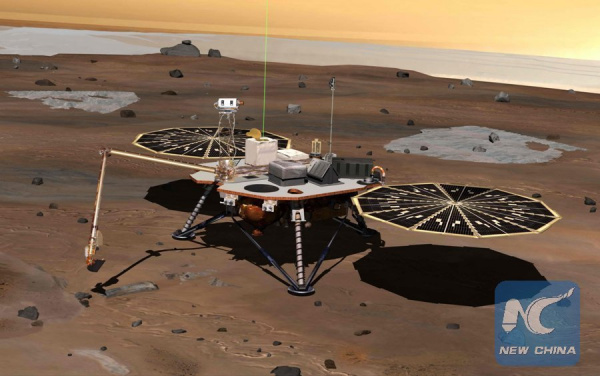
U.S. space agency NASA said Friday it has approved the launch of its Mars lander known as InSight in spring 2018 to study the Red Planet's deep interior.
The Interior Exploration using Seismic Investigations, Geodesy and Heat Transport (InSight) mission was originally scheduled to launch in March this year, but NASA suspended launch preparations in December due to a vacuum leak in the lander's prime science instrument.
The new launch period for the mission begins May 5, 2018, with a Mars landing scheduled for Nov. 26, 2018, NASA said in a statement.
The instrument redesign and two-year delay add 153.8 million U.S. dollars to its current budget of 675 million dollars for the mission, said the agency.
The additional cost will not delay or cancel any current missions, but it means there will be "fewer opportunities for new missions in future years, from fiscal years 2017-2020," it said.
The instrument involved was the Seismic Experiment for Interior Structure (SEIS), a seismometer provided by France's space agency, the Center National d'Etudes Spatiales (CNES).
Designed to measure ground movements as small as the diameter of an atom, the SEIS instrument requires a perfect vacuum seal around its three main sensors to withstand harsh conditions on the Red Planet.
NASA said its Jet Propulsion Laboratory will now be responsible for redesigning, developing and qualifying the instrument's evacuated container and the electrical feedthroughs that failed previously.
The CNES will instead focus on developing and delivering the key sensors for SEIS, integration of the sensors into the container, and the final integration of the instrument onto the spacecraft, the agency added.


















































